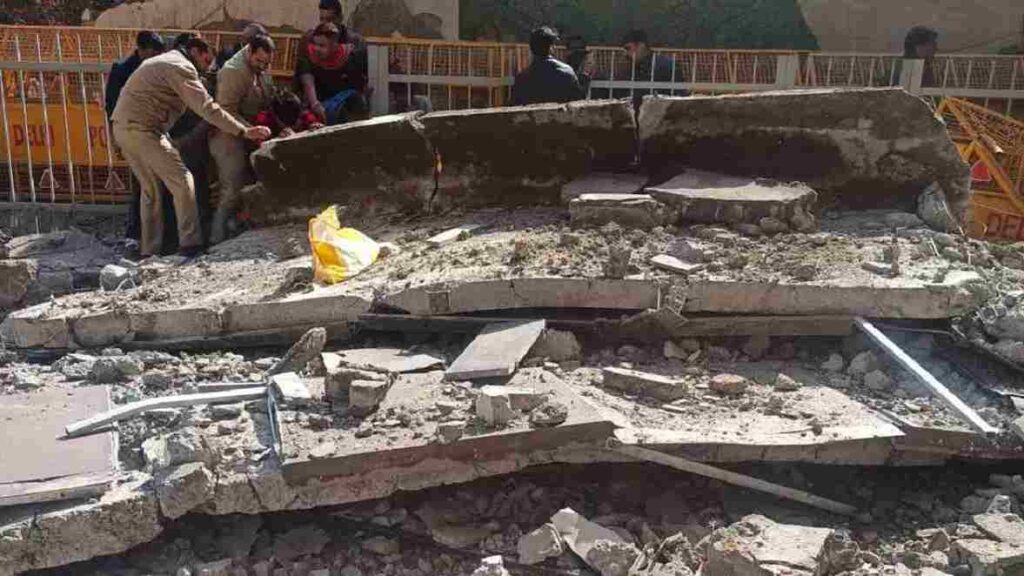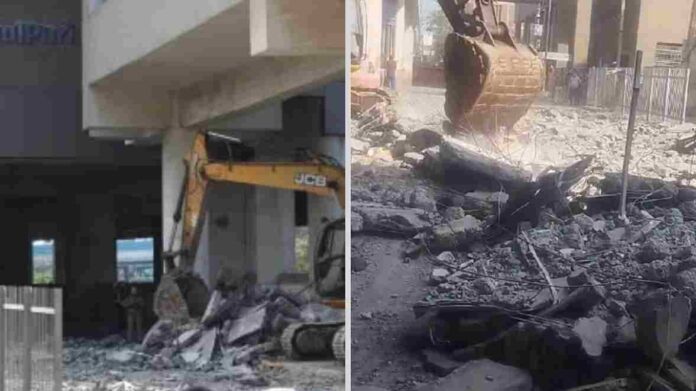In a sorrowful occurrence on a Thursday morning, the Gokulpuri Metro Station in Delhi witnessed a catastrophic failure when a significant portion of its platform side wall, along with a concrete slab, came crashing down onto the bustling traffic below. This incident not only disrupted the lives of many but also posed serious questions regarding the safety of urban infrastructure.
Table of Contents
Details of Gokulpuri Metro Station Tragedy
The collapse resulted in immediate chaos and panic among the commuters and bystanders. Debris scattered across the area, severely injuring four individuals and tragically claiming the life of Vinod Kumar, a 53-year-old resident of Karawal Nagar. Eyewitnesses described the horror as the structure gave way without warning, leaving little time for anyone to react.
Response and Rescue Operations
Emergency services, including the police, fire brigade, and National Disaster Response Force (NDRF), were quick to respond. Rescue operations commenced immediately to extricate the injured from the rubble and provide them with the necessary medical attention. The critically injured were rushed to GTB Hospital, highlighting the promptness of the city’s emergency response systems.
Casualties and Injuries

The tragedy saw one fatality and several injuries, with one person remaining in critical condition. The injured, identified as Ajit Kumar, Monu, Sandeep and Mohammad Tajir, suffered varying degrees of harm, underscoring the severe impact of the incident on individuals and families.
Compensation and Support
The Delhi Metro Rail Corporation (DMRC) expressed its condolences and announced compensation: ₹25 lakh for the deceased’s family, ₹5 lakh for the critically injured, and ₹1 lakh each for those with minor injuries. This gesture aimed to provide some solace and support to the victims and their families during this challenging time.
Investigation and Accountability
Following the incident, two officials from the civil department were suspended as part of immediate accountability measures. The police initiated an investigation, registering a case of negligence leading to death, to uncover the reasons behind the collapse and prevent future occurrences.
Public Safety and Infrastructure Quality
The incident has raised significant concerns about the safety and quality of newly constructed metro lines, including the Pink Line, where Gokulpuri Station is located. It calls into question the standards and practices followed in the construction and maintenance of public infrastructure.
Future Measures and Recommendations
This tragedy serves as a critical reminder of the need for stringent safety measures, regular maintenance checks, and immediate corrective actions to address any infrastructural weaknesses. Recommendations for improving public infrastructure safety include conducting thorough audits, enhancing emergency preparedness, and fostering a culture of safety first.
Community Reaction and Solidarity
The community’s reaction to the tragedy was one of shock and sorrow, accompanied by a strong call for accountability and improved safety measures. The solidarity shown by bystanders, emergency responders, and the public at large underscores the collective resolve to support those affected and work towards preventing such incidents in the future.
Conclusion
The Gokulpuri Metro Station incident is a stark reminder of the vulnerabilities in our urban infrastructure and the devastating impact such failures can have on human lives. As we mourn the loss and tend to the injured, it is imperative that we also take decisive steps to enhance the safety and reliability of public infrastructure, ensuring that such tragedies do not recur. The path forward must be one of vigilance, responsibility, and a steadfast commitment to public safety.


